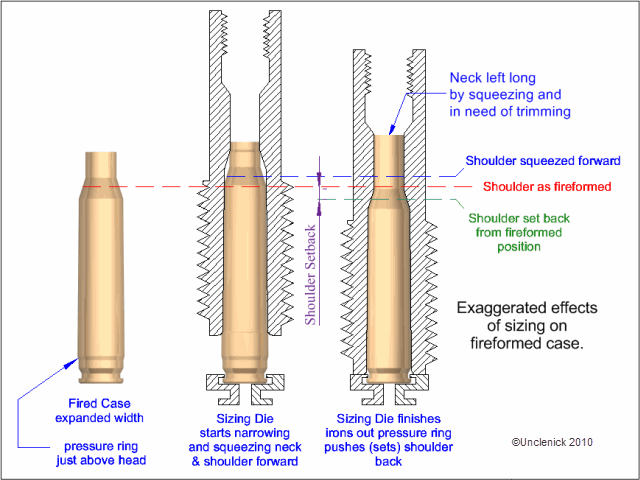44Amp, Garand bolts are fully unlocked when their bullet's are about 7 feet out past the muzzle. I doubt there's enough pressure in the case to press it against the chamber wall. That's not easy to measure. If there was, I think there would be lengthwise scratches on the case as it's pulled out of the chamber.
oldandslow, I measured case lengths before and after firing about 4 dozen shots with a .308 bolt gun. Starting out with a new Federal case 2.000" long, it was loaded then fired with a max load under 165-gr. bullets. After firing, the case was about 1.997" long; shortened about .003". Full length sizing it made it grow to about 2.001". Loading it then firing it again had the same shortening and growing cycle each time; gained close to .001" every time. When it got up to about 2.010", I trimmed it back to 2.000". My .30-.338 Win Mag cases had about .004" shorter length when fired, then grew a bit over .005" when full length sized.
I think most people measure case length after it's been sized. That causes the brass to grow and the only way it grows while in the die is longer. When fired, the case starts out smaller then gets larger when fired; that has to take metal out of the case neck to move the case body to a larger diameter.
Jimro, I don't think there's any difference in primer cup thickness between standard and magnum-labeled primers:
http://www.accurateshooter.com/technical-articles/primers-and-pressure-analysis/
I think Tulammo's (formerly PMC then Wolf) magnum primers are thicker than their standard ones, so I've read on one of their web site pages. But the primer pellet's the same.

